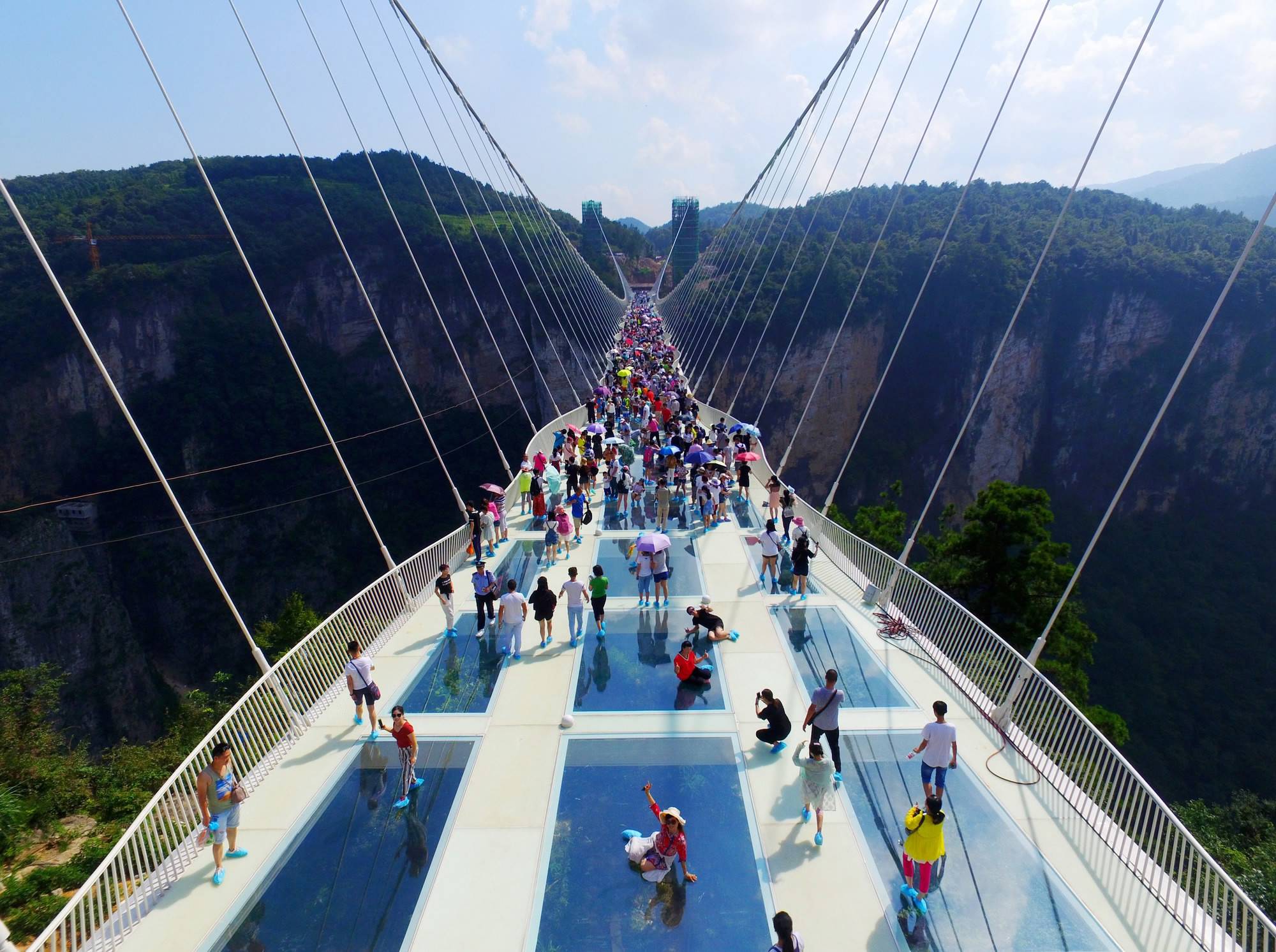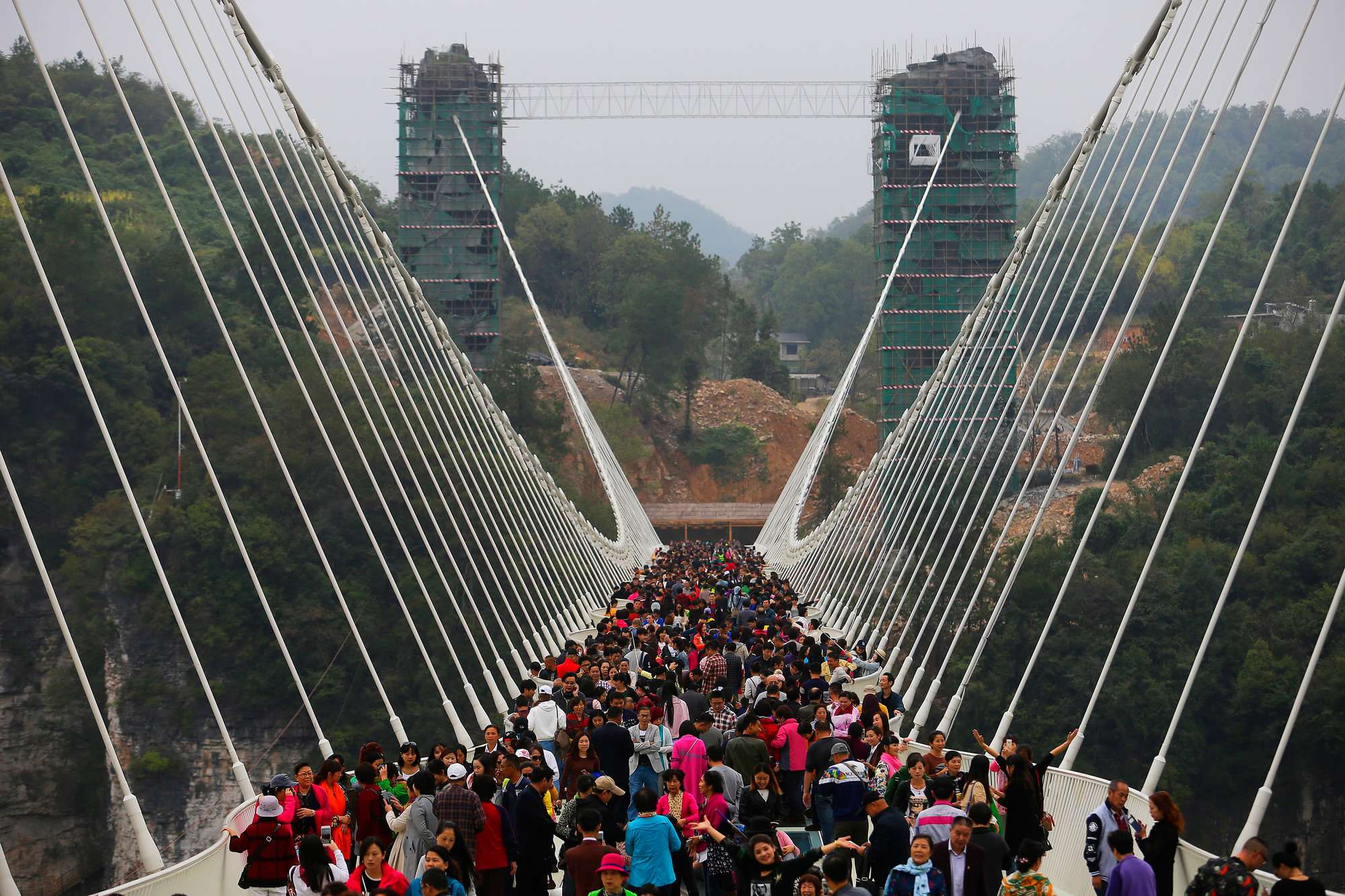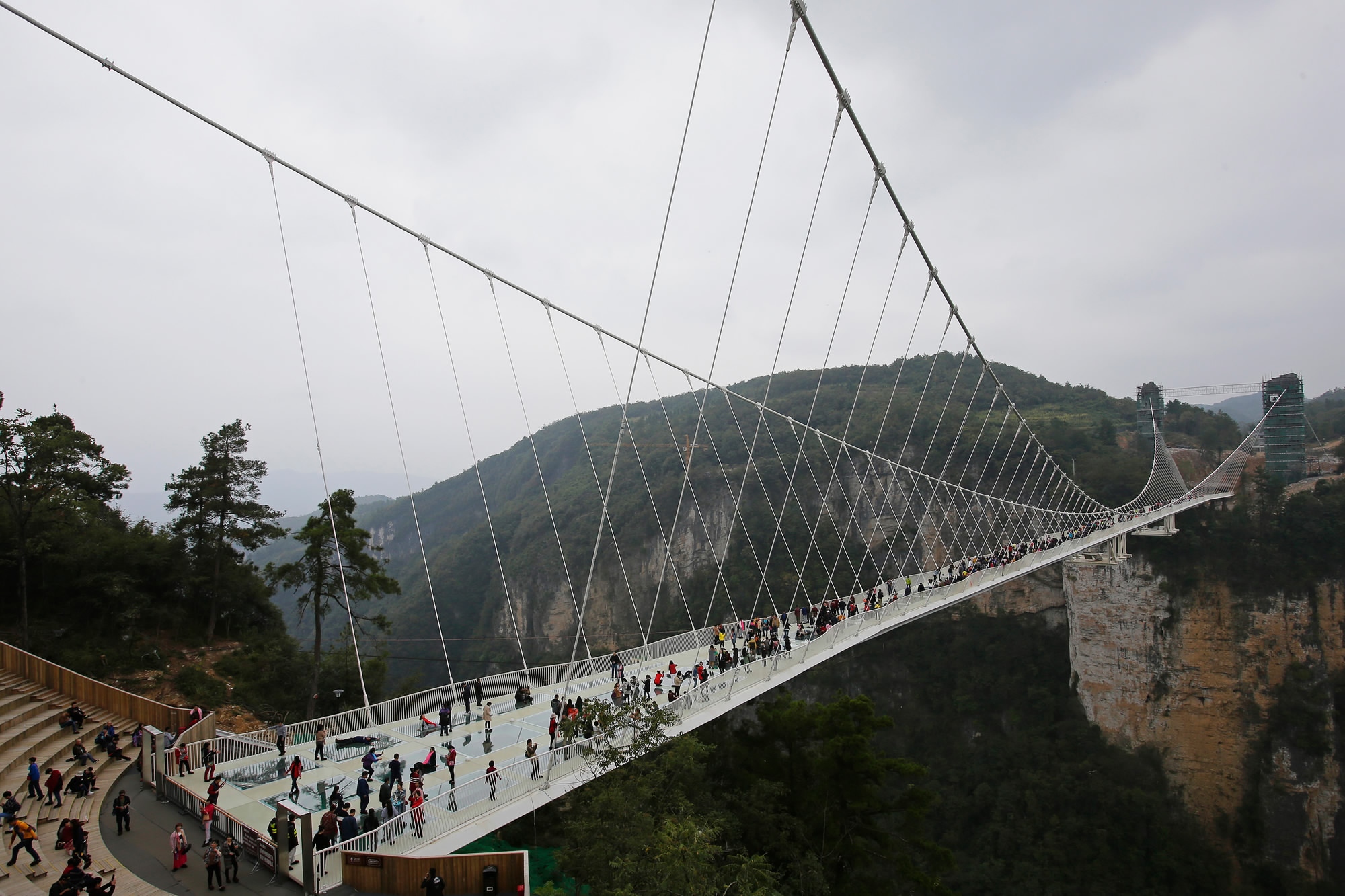
China
11:45, 03-Jan-2017
Highest, longest: China’s record-breaking glass bridge
Updated
10:29, 28-Jun-2018

-A 100-meter-long glass skywalk, the highest and longest in the world, opens in central China
-China currently has over 57 glass-bottomed bridges; a further 28 are under construction
-An intensive social media campaign helps make the bridge a global news story

Awe-inspiring architectural accomplishments have sprung up across China in recent years, but in 2016 a feat of engineering was unveiled in Hunan Province that inspired wonder across the globe - the world’s highest and longest glass bridge.
Visitors to the Zhangjiajie Grand Canyon scenic area had their first opportunity to tread the 430-meter-long and six-meter-wide glass-bottomed walkway on August 20.

A view of Zhangjiajie’s glass bridge, August 22, 2016. /CFP Photo
A view of Zhangjiajie’s glass bridge, August 22, 2016. /CFP Photo
And encouraged by an influential social media campaign - which included the driving of a car over the bridge to prove its safety - visitors came in droves to experience the record-breaking structure.
The capacity of the glass bridge was limited to 8,000 visitors per day, but officials said initial demand was ten times higher. The unprecedented popularity led to the glass-bottomed bridge and surrounding area being temporarily closed 13 days after the grand opening, with updates to the park’s infrastructure needed to cope with the crowds.

6,000 domestic tourists visited Zhangjiajie’s glass bridge once it reopened in October, 14 October, 2016. /CFP Photo
6,000 domestic tourists visited Zhangjiajie’s glass bridge once it reopened in October, 14 October, 2016. /CFP Photo
Once the landmark reopened in October, thousands of tourists - a maximum of 800 at a time - took nervous first steps onto the structure, before striding, meandering and even lying 300 meters above the valley below. Daredevils can enjoy the world’s high-est bungee jump from the bridge, and fashionistas have evened turned parts of it into a catwalk.
China currently has over 57 glass-bottomed bridges, and a further 28 are under con-struction. As more private investment is injected into the tourism industry, glass struc-tures are becoming a must-have lure for visitors.

Visitors are invited to test the Zhangjiajie bridge’s security, 25 June, 2016. /CFP Photo
Visitors are invited to test the Zhangjiajie bridge’s security, 25 June, 2016. /CFP Photo
But none of the previous glass-bottomed bridges made as much noise as Zhangjiajie’s on social media.
Research by Sina Weibo suggests 45 percent of posts about Zhangjiajie on the Chinese social media platform were about the glass bridge, with 860,000 posts mentioning the structure in total, from early June to October. A 340-meter-long glass bridge constructed in Shanghai at the same time only received 3,000 posts on Weibo.

6,000 domestic tourists visited Zhangjiajie’s glass bridge once it reopened in October, 14 October, 2016. /CFP Photo
6,000 domestic tourists visited Zhangjiajie’s glass bridge once it reopened in October, 14 October, 2016. /CFP Photo
The glass bridge trend is clearly set to continue in China, but how much higher and longer can they be built? And will tourists eventually tire of the structures? For now, the trend shows no sign of abating. We can expect many more engineering marvels to grace China’s landscape in 2017.
Questions for 2017
-Glass bridges and viewing platforms are being constructed across China. But why do they generate such excitement? Why are international media so interested in them?
-If glass structures are a passing fad, what will happen to them in the future? And what will be the next tourism trend?
-What does their popularity say about interest in natural wonders? More visitors are lured to scenic areas, but is this a Disney fiction of China’s natural landscape?
(Written by Liu Chen; Edited by John Goodrich; Video edited by Liu Chen; and Room with a View produced by Xu Jiye)
1319km

SITEMAP
Copyright © 2018 CGTN. Beijing ICP prepared NO.16065310-3
Copyright © 2018 CGTN. Beijing ICP prepared NO.16065310-3